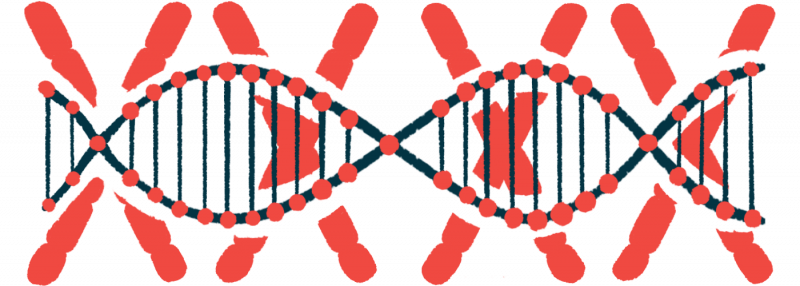Same Mutation Causes SMABF2 in 2 Unrelated Infants, Case Study Says

The same mutation caused spinal muscular atrophy with congenital bone fractures-2 (SMABF2) in two unrelated infants of Roma descent, a case study reported. The researchers suggest genetic screening of those at risk within the Roma population.
The case study, “Spinal muscular atrophy with congenital bone fractures 2 caused by a rare loss-of-function ASCC1 gene mutation in two Bulgarian Roma patients,” was published in the journal Clinical Genetics.
SMABF2 is a rare, severe neuromuscular disorder caused by mutations in the ASCC1 gene, which encodes for a protein involved in a larger protein complex that plays a role in the activity of other genes.
In animal models, suppression of ASCC1 gene activity leads to severe impairment of the growth of nerves that control movement and altered formation of the neuromuscular junction, where nerves connect to the muscles they control.
SMABF2 is characterized by the onset of a severe lack of muscle tone before birth, resulting in tightening of muscles and increased prenatal fractures of the long bones, such as arms and legs. Affected infants have difficulties breathing and feeding and often do not survive beyond the first days or months of life.
In this report, researchers at the Medical University Sofia in Bulgaria described the cases of two unrelated newborns of Roma origin who died in early infancy from SMABF2.
“To our knowledge, the presented children are the first reported Roma patients with SMABF2,” the team wrote.
The first case was a male delivered by cesarean section to parents of Roma descent who were consanguineous — a union of two individuals related as second cousins or closer.
The child was born with bluish or purplish skin discoloration, low body temperature, stiffness in multiple joints, poor muscle tone, fractures of the upper arms and leg bones, and undescended testicles. He developed progressive lung failure, which required mechanical ventilation, and died 12 days post-birth.
Although the inherited brittle bone disease called osteogenesis imperfecta was initially suspected, a genetic analysis found a mutation in the ASCC1 gene that resulted in no ASCC1 protein production. Each parent carried this mutation in one of their ASCC1 genes.
Further genetic counseling and prenatal screening of the next pregnancy led to the birth of a healthy noncarrier male.
The second case involved a newborn female also from a young consanguineous couple of Roma origin. The baby showed low muscle tone, stiffness in multiple joints, fractures in the left upper arm and both upper legs, reduced movements, no reflexes, and breathing problems. She needed ventilation and died 48 days after birth.
Based on the similarities to the first case, the team ordered DNA analysis for the same ASCC1 gene mutation. A diagnosis of SMABF2 was confirmed when the same mutation was revealed, which was also inherited from both parents.
A literature search found seven families with 11 affected individuals and one stillbirth associated with mutations in the ASCC1 gene.
“Based on their population characteristics we may presume a higher carrier frequency of the mutation … in Bulgarian Roma population,” the authors wrote. “Implementation of Roma population carrier screening is a feasible option to discuss.”
The post Same Mutation Causes SMABF2 in 2 Unrelated Infants, Case Study Says appeared first on SMA News Today.


